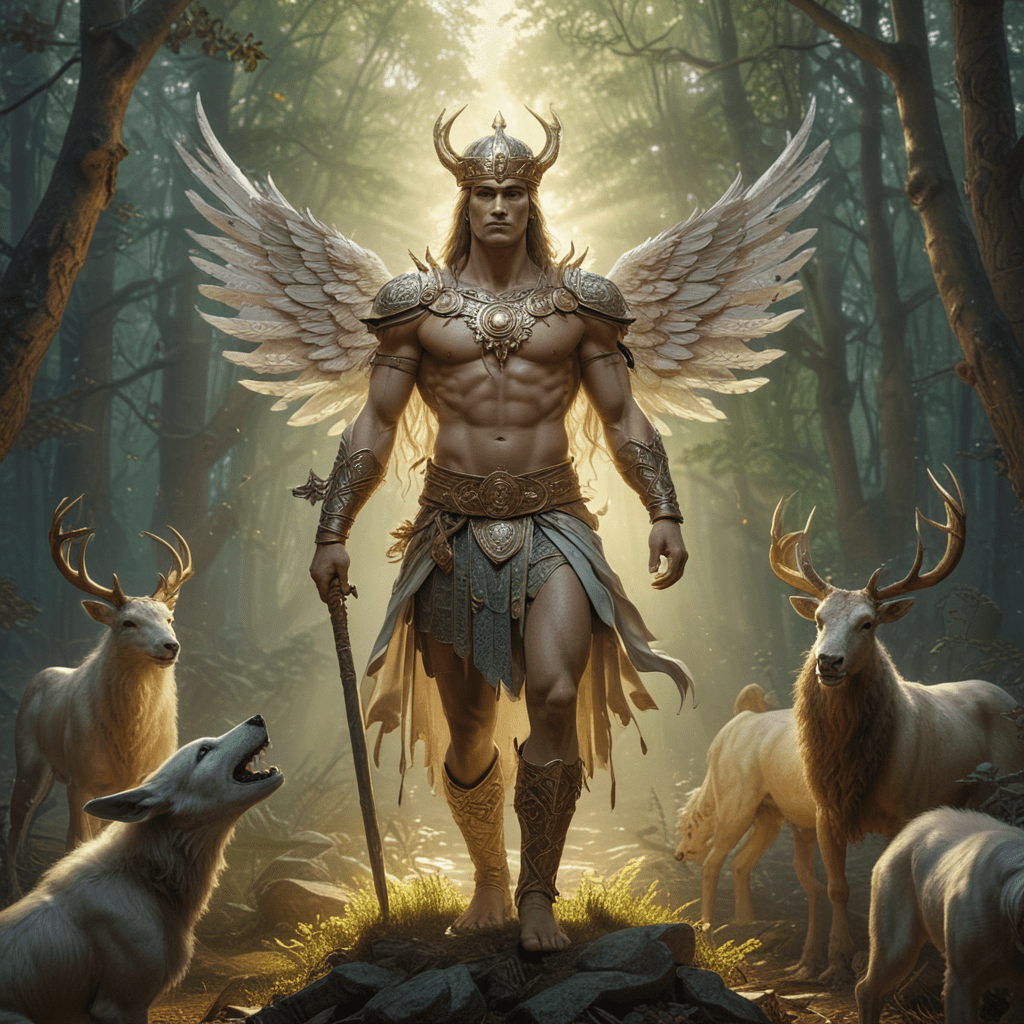The Concept of Transformation in Slavic Mythology
Introduction:
Transformation, the act of changing form or nature, holds immense significance in Slavic mythology. It is a fundamental concept that permeates various aspects of Slavic beliefs and narratives, symbolizing fluidity, adaptability, and the interplay between the natural and supernatural realms.
Forms of Transformation:
Slavic mythology encompasses numerous forms of transformation, including:
Animal transformation (zoomorphism): This involves the transformation of humans into animals, often as a means of survival, deception, or punishment.
Human-animal hybridism: This refers to beings that possess both human and animal characteristics, such as the enigmatic creatures known as rusalki.
Shape-changing magic (shapeshifting): This form of transformation allows individuals to alter their physical appearance, taking on the guise of animals, mythical beings, or other forms.
Motives for Transformation:
The reasons for transformation in Slavic mythology are varied and complex. These include:
Survival and self-protection: Transformation could offer a means of escaping danger, hiding from enemies, or adapting to changing circumstances.
Deception and disguise: Shapeshifting allowed individuals to assume different identities, deceive others, and gain access to forbidden places or information.
Divine intervention and supernatural power: Gods and spirits could grant the ability to transform as a gift or punishment, bestowing upon individuals special powers or abilities.
Agents of Transformation:
The agents responsible for transformation in Slavic mythology include:
Gods and spirits: Deities such as Veles, the god of the underworld, and Perun, the god of thunder, possessed the power to transform themselves and others.
Shamans and sorcerers: These individuals were believed to have the ability to communicate with spirits and perform magical rituals that could induce transformation.
Magic spells and rituals: Incantations, potions, and specific incantations could be used to trigger or control transformations.
Transformative Figures:
Slavic mythology abounds with transformative figures, including:
Tricksters: Cunning and mischievous beings like Loki and Veles displayed the ability to shapeshift and deceive others.
Shapeshifters: Wolves, bears, and birds were commonly depicted as creatures capable of assuming human form.
Demons and otherworldly beings: Entities such as rusalki (water spirits) and vampyres possessed the power to transform and interact with the human world.
Mythical Narratives and Transformations:
Transformations play a pivotal role in Slavic mythical narratives:
Epic poems and legends: The byliny, heroic epic poems, recount the exploits of legendary heroes who undergo transformations to overcome challenges.
Folktales and fairy tales: Tales such as Cinderella and Baba Yaga feature characters who undergo transformative experiences, often with moral or cautionary implications.
Rituals and ceremonies: Certain rituals and ceremonies incorporated elements of transformation, such as donning animal masks or enacting symbolic transformations.
Symbolism and Meaning:
Transformations in Slavic mythology convey profound symbolism and meaning:
Connection between the natural and supernatural: Transformations bridged the gap between the human and animal realms, as well as the natural and supernatural worlds.
Fluidity and uncertainty of identity: Shapeshifting challenged fixed notions of identity, reflecting the belief in the fluidity and adaptability of human nature.
Renewal, rebirth, and cosmic balance: Transformations symbolized cycles of life, death, and renewal, maintaining harmony and balance within the Slavic worldview.
FAQ:
- What is the most common form of transformation in Slavic mythology?
Animal transformation (zoomorphism) is the most prevalent form, with humans turning into animals for survival, deception, or punishment.
- Who are some notable transformative figures in Slavic mythology?
Loki and Veles, the tricksters, and wolves, bears, and birds are well-known shapeshifters in Slavic mythology.
- What is the significance of transformation in Slavic mythology?
Transformation symbolizes fluidity, adaptability, and the interplay between the natural and supernatural realms, reflecting the belief in the changing nature of existence.


